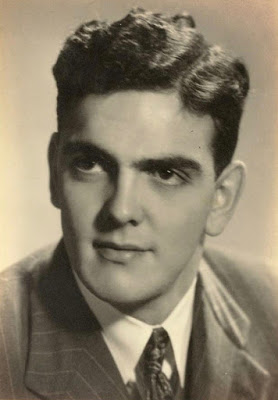On February 4, 1945, the day after the liberation of nearby Santo Tomás, the Japanese military abandoned Old Bilibid Prison. Later that day, men from the U.S. 37th Ohio Division accidentally discovered over 800 POWs and 500 civilian internees there. The civilians had formerly been held in Bagiuo Internment Camp, but were moved from to Old Bilibid, starting to arrive there at midnight, December 28, 1944.
 At six o’clock on the evening of the third of February … someone on the second floor saw a couple of “jeeps” arrive at the juncture of Quezon Boulevard and Calle Espana only a few hundred yards away. The boulevard was but a block from us, running north and south, while Espana was the avenue upon which the Sto. Tomas University faced, the buildings of which were plainly visible from Bilibid. Shortly afterwards they were joined by tanks and some army trucks representing a total force of 700 men comprising units of the First Cavalry (mechanized) and the 37th Ohio Division. It required a little time for us to realize that MacArthur’s men had arrived, so sudden and without warning was their advent… It was learned later, that our troops knew nothing of our presence at Bilibid, else we might have been relieved that night. At 8:45 [p.m] the tanks knocked at the Sto. Tomas gates and admission being refused they proceeded to level them and enter the grounds. R. Renton Hind, Spirits Unbroken, 1946.
At six o’clock on the evening of the third of February … someone on the second floor saw a couple of “jeeps” arrive at the juncture of Quezon Boulevard and Calle Espana only a few hundred yards away. The boulevard was but a block from us, running north and south, while Espana was the avenue upon which the Sto. Tomas University faced, the buildings of which were plainly visible from Bilibid. Shortly afterwards they were joined by tanks and some army trucks representing a total force of 700 men comprising units of the First Cavalry (mechanized) and the 37th Ohio Division. It required a little time for us to realize that MacArthur’s men had arrived, so sudden and without warning was their advent… It was learned later, that our troops knew nothing of our presence at Bilibid, else we might have been relieved that night. At 8:45 [p.m] the tanks knocked at the Sto. Tomas gates and admission being refused they proceeded to level them and enter the grounds. R. Renton Hind, Spirits Unbroken, 1946.
 February 4, 1945: There had been some snipping on Rizal Avenue, and some soldiers of the 37th Ohio Division, who were preparing to bivouac, were ordered by one of their officers to rip away some boards that covered a large hole in the prison wall and find out what was beyond. When they tore the boards away, they were dumbfounded to find American POWs on the other side. Donald E. Mansell, Under the Shadow of the Rising Sun, 2003.
February 4, 1945: There had been some snipping on Rizal Avenue, and some soldiers of the 37th Ohio Division, who were preparing to bivouac, were ordered by one of their officers to rip away some boards that covered a large hole in the prison wall and find out what was beyond. When they tore the boards away, they were dumbfounded to find American POWs on the other side. Donald E. Mansell, Under the Shadow of the Rising Sun, 2003.
On February 5th, the now former internees were move to the abandoned Ang Tibay shoe factory, which the Japanese had turned into an airplane repair show. On the 6th they were finally fed by the U.S. Army. That breakfast on the morning of the 6th will long live in our memories- cereal, milk, sugar, coffee, wheat bread and bacon and eggs. Lined up in four queues the 1300 of us including released prisoners of war were promptly served this wholesome “home-side” food. We wandered about the place all day, listened to the radio, through the kindness of the Signal Corps, talked with the prisoners of war and towards evening-the fire near Bilibid having burned itself out-we were loaded into trucks and taken back to town. Some of us were fired upon by Jap snipers but, fortunately, their marksmanship was poor. R. Renton Hind, Spirits Unbroken, 1946.
February 7, 1945: About ten there were big cheers in the hall and someone said it was General MacArthur and his staff. I was too dull and weary to go to look and not much interested. I was standing in our space by the double bunk when MacArthur came through the door at the far end of the room… When the General passed the bunk he turned and looked into my face directly. He grabbed my hand and shook it, over and over, up and down. I was totally dumb. Natalie Crouter, Forbidden Diary, 1980.
The former internees stayed in the prison until February 22nd, when they began to be flown in groups to Leyte to be repatriated.

















